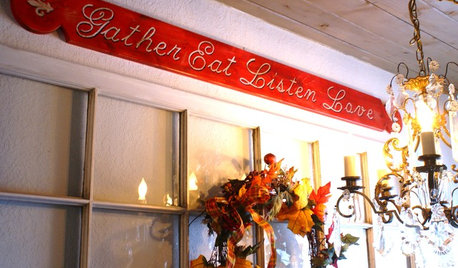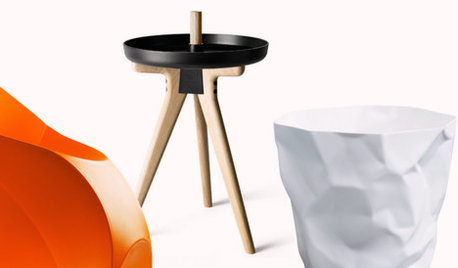Just say 'no' to Medlars
Scott F Smith
17 years ago
Featured Answer
Comments (54)
sandylighthouse
17 years agolast modified: 9 years agoashok_ncal
17 years agolast modified: 9 years agoRelated Professionals
Fort Lee Landscape Architects & Landscape Designers · Milwaukee Landscape Architects & Landscape Designers · Washington Landscape Architects & Landscape Designers · Allentown Landscape Contractors · Cudahy Landscape Contractors · Davidson Landscape Contractors · Dickinson Landscape Contractors · Eureka Landscape Contractors · Hawthorne Landscape Contractors · Hickory Hills Landscape Contractors · Munster Landscape Contractors · Secaucus Landscape Contractors · Vineyard Landscape Contractors · Woodbury Landscape Contractors · New Carrollton Landscape Contractorstampopo
17 years agolast modified: 9 years agoflora_uk
17 years agolast modified: 9 years agoEmbothrium
17 years agolast modified: 9 years agoashok_ncal
17 years agolast modified: 9 years agolarry_gene
17 years agolast modified: 9 years agonygardener
17 years agolast modified: 9 years agosqueeze
17 years agolast modified: 9 years agoJonathan
17 years agolast modified: 9 years agoemilyg
17 years agolast modified: 9 years agoinstar8
17 years agolast modified: 9 years agoScott F Smith
17 years agolast modified: 9 years agoemilyg
17 years agolast modified: 9 years agoemilyg
16 years agolast modified: 9 years agoScott F Smith
16 years agolast modified: 9 years agoemilyg
16 years agolast modified: 9 years agorws92
16 years agolast modified: 9 years agoScott F Smith
16 years agolast modified: 9 years agoemilyg
16 years agolast modified: 9 years agolucky_p
16 years agolast modified: 9 years agoScott F Smith
16 years agolast modified: 9 years agoaustransplant
16 years agolast modified: 9 years agorosefolly
16 years agolast modified: 9 years agoyugoslava
15 years agolast modified: 9 years agoflora_uk
15 years agolast modified: 9 years agoScott F Smith
15 years agolast modified: 9 years agopeanuttree
15 years agolast modified: 9 years agoScott F Smith
15 years agolast modified: 9 years agoJonathan
15 years agolast modified: 9 years agosoultan
15 years agolast modified: 9 years agoAxel
15 years agolast modified: 9 years agoflora_uk
15 years agolast modified: 9 years agogliese
15 years agolast modified: 9 years agoboizeau
15 years agolast modified: 9 years agosautesmom Sacramento
14 years agolast modified: 9 years agoradovan
14 years agolast modified: 9 years agoronbre
12 years agolast modified: 9 years agonjbiology
11 years agolast modified: 9 years agochervil2
11 years agolast modified: 9 years agoScott F Smith
11 years agolast modified: 9 years agoaustransplant
11 years agolast modified: 9 years agoScott F Smith
11 years agolast modified: 9 years agoarmyofda12mnkeys
11 years agolast modified: 9 years agoAnna Kinslow
8 years agoarmyofda12mnkeys
8 years agolast modified: 8 years agofloral_uk z.8/9 SW UK
8 years agoYugoslava
7 years agoyugoslava
7 years ago
Related Stories

HOME OFFICESThe Great Paper Push: Just Say No
Going paperless is a heck of a lot easier when you put the kibosh on letting flyers, junk mail and more get past the front door
Full Story
FUN HOUZZGuessing Game: What Might Our Living Rooms Say About Us?
Take a shot on your own or go straight to just-for-fun speculations about whose homes these could be
Full Story
DECORATING PROJECTSHave Your Say With a DIY Decorative Sign
Express your thoughts in just the right amount of space with a hanging sign you easily make yourself
Full Story
ECLECTIC STYLEBeautiful Clutter? These 13 Rooms Say Go for It
No need to haul cartons to Goodwill for a picture-perfect room. You can have a well-decorated home and all your stuff too
Full Story
DECORATING GUIDES12 Ways Your Home Can Say Happy Derby Day
Add a dash of fresh Kentucky Derby style to your home
Full Story
SHOP HOUZZHouzz Products: Innovative Things to Make You Say, ‘Wow’
Meet the problem solvers, the delightful finds and other models of great, creative design
Full Story
WINDOWSSay Ahoy to Porthole Style at Home
Steer toward ship-inspired windows and mirrors for a subtle maritime feel inside and out
Full Story
LANDSCAPE DESIGNCalifornia Says Goodbye to the Sprawling Ornamental Lawn
New state rules will effectively limit turfgrass to 25 percent of the landscape in most new and renovated yards
Full Story
BEDROOMSGuessing Game: What Might Our Bedrooms Say About Us?
For entertainment only; actual accuracy may vary. Always don fun goggles and engage your imagination before playing!
Full Story
MOST POPULARSo You Say: 30 Design Mistakes You Should Never Make
Drop the paint can, step away from the brick and read this remodeling advice from people who’ve been there
Full StoryMore Discussions









vesna034